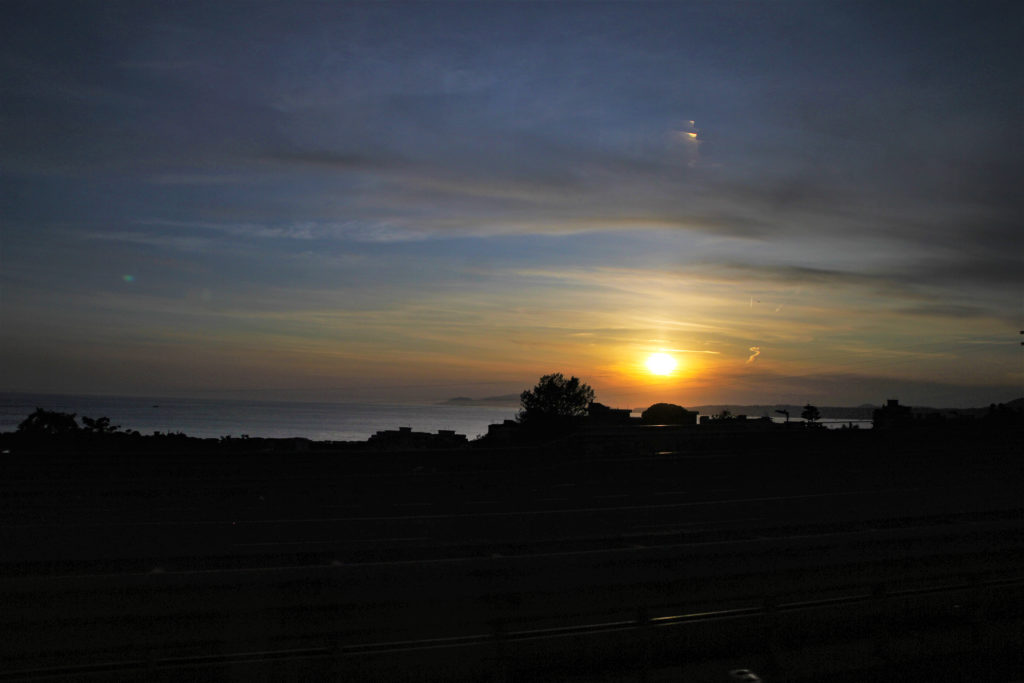I am pleased to share that after my unexpected delay and improvised adventure (hence my previous post), I made it to Pompeii on Saturday, September 21! Glad that went according to plan, at least.
After a three-hour bus ride, I arrived at Pompei (spelled with one “i” in Italian) at 3:10 p.m. I got to see the central and southern Italian landscape we drove into and past the city of Naples (Napoli in Italian).
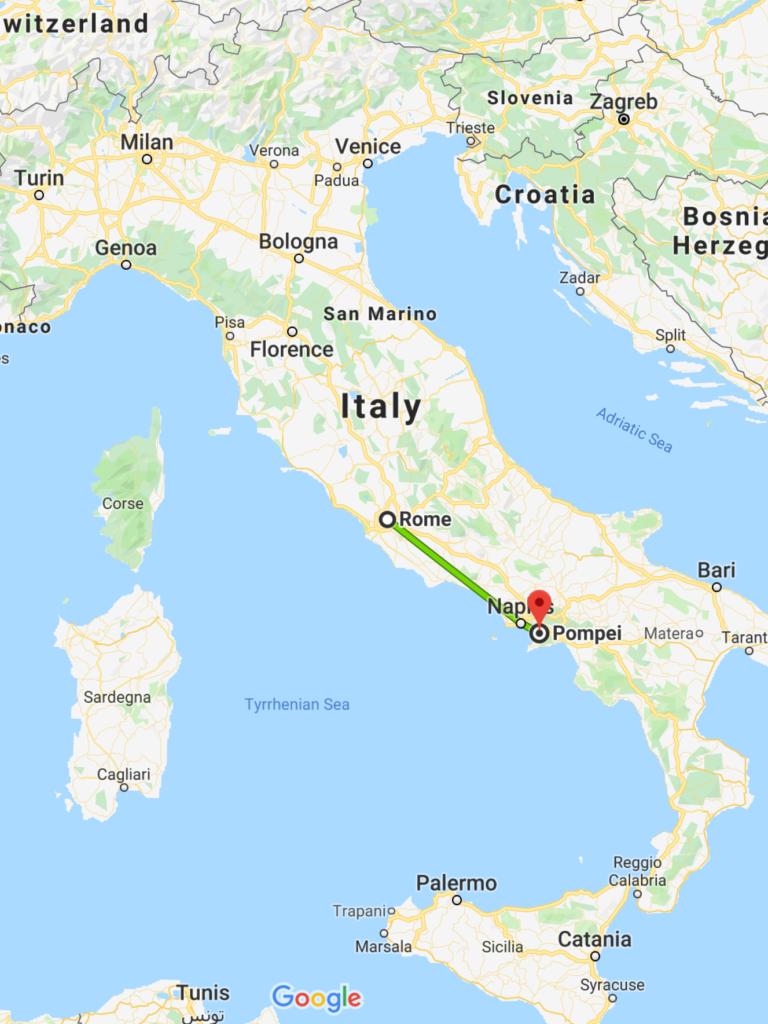
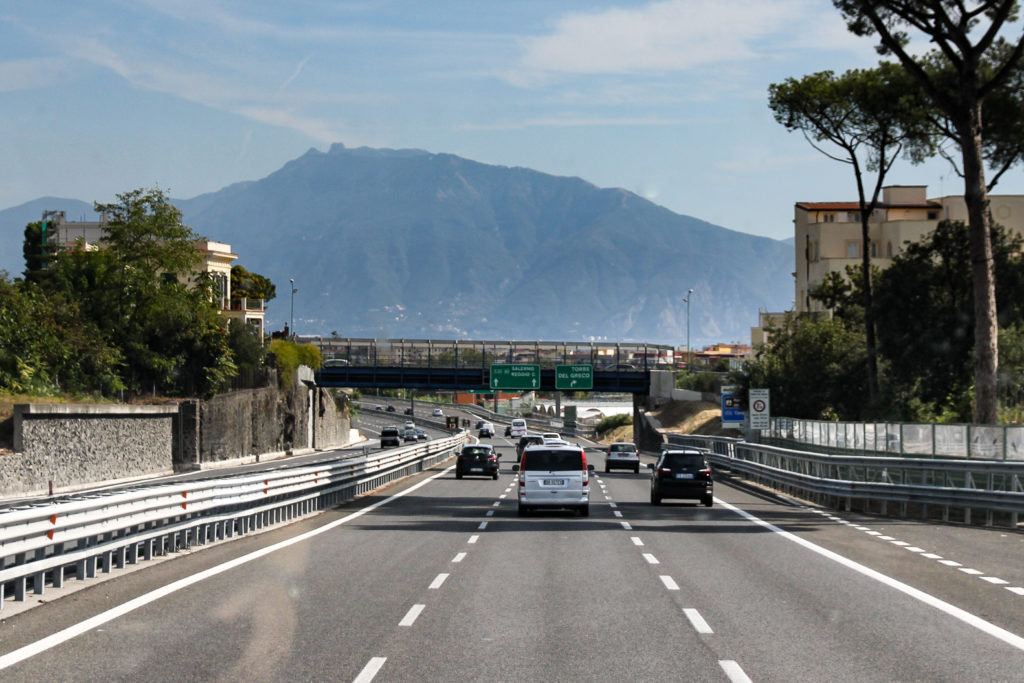
I walked thirty minutes to the Parco Archeological di Pompei (Archaeological Park of Pompeii). Almost two millenia ago, in 79 C.E., Mt. Vesuvius erupted and destroyed several ancient Roman cities in the area of southern Italy (which is now the Gulf of Naples).
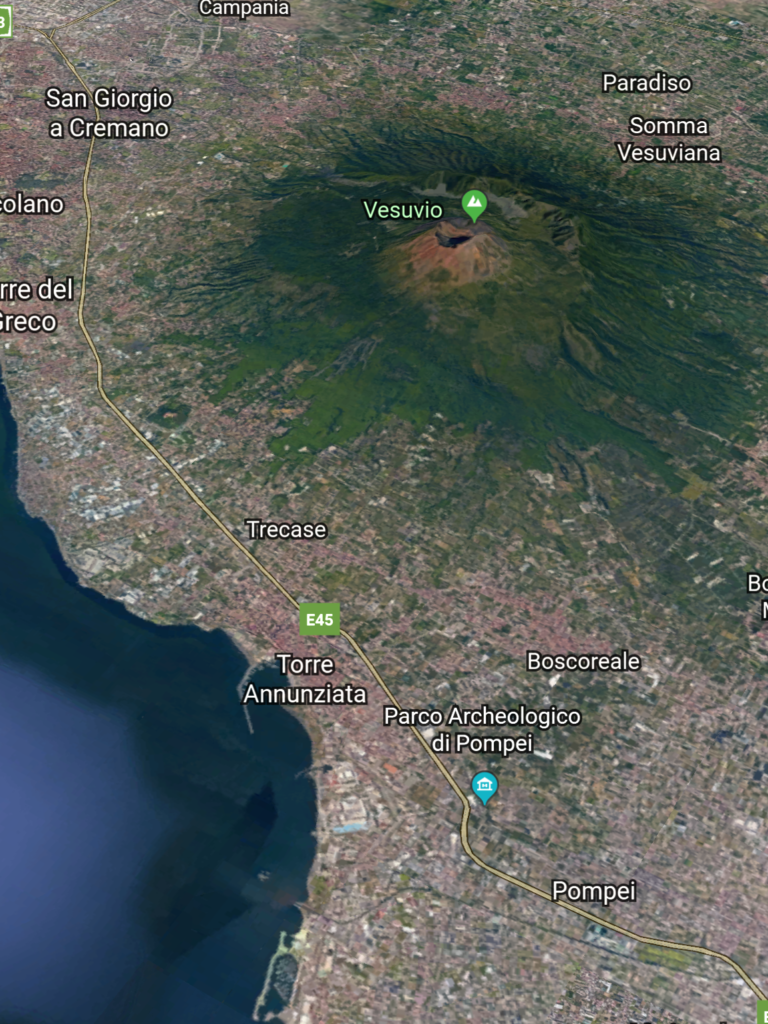
Pompeii was one of the cities wiped out during the volcanic eruption, but the ruins of the city and eyewitness accounts from the ancient Roman naturalist Pliny the Elder still exist today and tell us the story of the place both before and during the eruption. While the volcano that buried the city in ash was a destructive force, it was also a protective one by shielding the ruins from erosion on the outside.
I learned a bit about Pompeii in Classical archaeology. My professor said that the site has been excavated, studied, and visited since the 18th century – it was a stop on the “Grand Tour” during the Enlightenment. Men from wealthier families, who studied the Classics as part of their education, travelled around the Mediterranean to see the ancient world. In the 19th century especially, Pompeii was a common destination for the “Grand Tour-ists.”
The rich were not the only ones who stopped by Pompeii after its rediscovery. In addition to the city itself, people have also found tunnels dug by robbers who looted valuables from the site. I wonder which areas of the park were excavated by trained archaeologists or looters first.
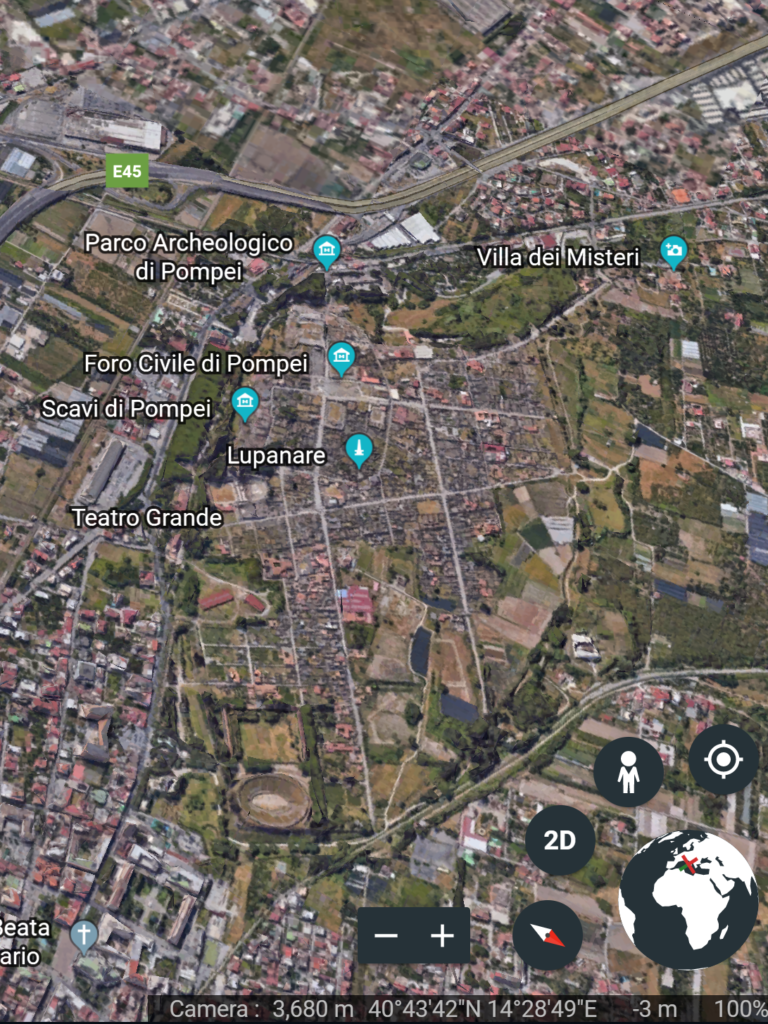 A closer look at Pompeii on Google Earth.
A closer look at Pompeii on Google Earth.
I was fascinated by Pompeii even before I came to Holy Cross. I took a course on ancient Roman history in high school and learned about Pompeii. We read a well-researched realistic fiction book about the city before and during the eruption of 79 and wrote our own short stories set in 1st-century Pompeii. My classmates and I used the names of actual people who lived in Pompeii at that time and reconstructed their lives and final moments during the pyroclastic flow of the eruption.
I first saw images of Pompeii through images on books and screens and learned more through videoes and documentaries. I was curious to see Pompeii firsthand when I researched aspects of daily life in the city and found interesting details about the eruption. It was one thing to see and learn about Pompeii in two-dimensions when I was younger: now, I got to see the real thing with my own eyes as an adult.
I thought about Mr. Blake, the teacher who first introduced me to Pompeii in high school, during this trip. He is the Head of the Classics department at Noble and Greenough School, which is a few minutes south of Boston. I graduated from Nobles over two years ago. He taught me Latin and ancient Roman history in high school and was my academic advisor. Mr. Blake and I have stayed connected and we talk as fellow Classics majors on occasion. I also come back to Nobles sometimes to give guest lectures to his students.
I knew quite a few things about Pompeii before I even planned to study abroad, but I was still blown away by my first view of the archaeological park. For years, I had seen Pompeii through pictures smaller than I was. I was amazed by the sheer size of the place – these were the ruins of a full-size city in front of me!

I walked into the entrance of the park after buying a ticket (I paid the adult fare, or €15) and saw bright colors still on the stones they were painted onto two millennia ago. Impressive how colorful the place is!
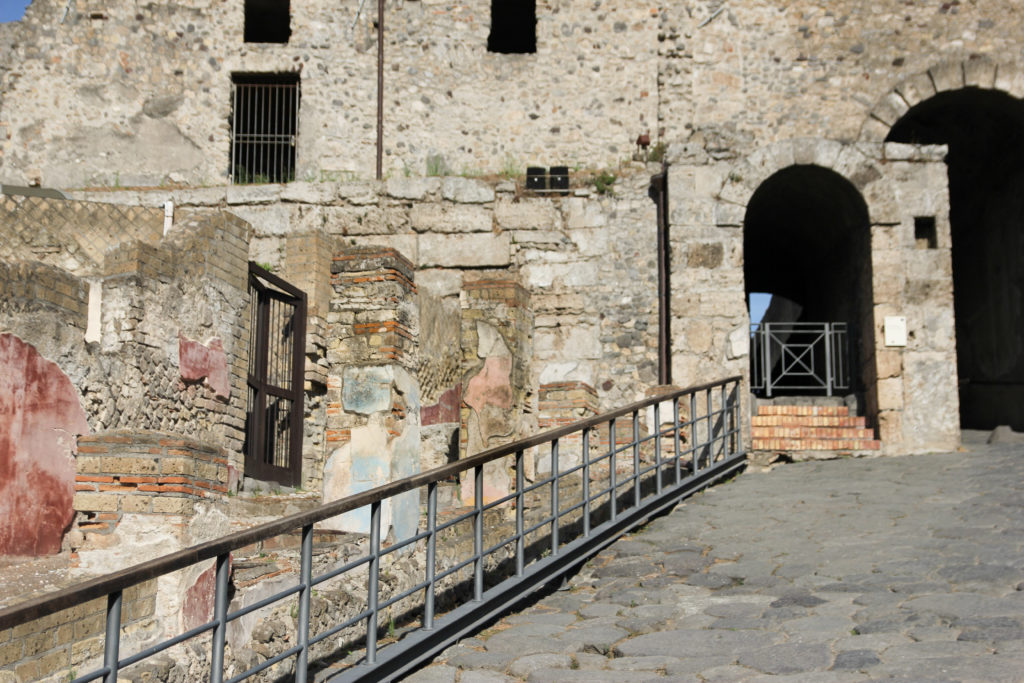
After I had recovered from my mini Pompeii-shock, I walked into main sites within the site. The Basilica and Forun were huge, open spaces which would have been the equivalent of a central square in a modern city today. There would have been a lot of busy buildings and people walking about in antiquity – now, it is like the remains of a ghost town of sorts. Stunning, but also haunting, with the fragmented pieces of Pompeii standing on site with the currently dormant Mt. Vesuvius in the background.
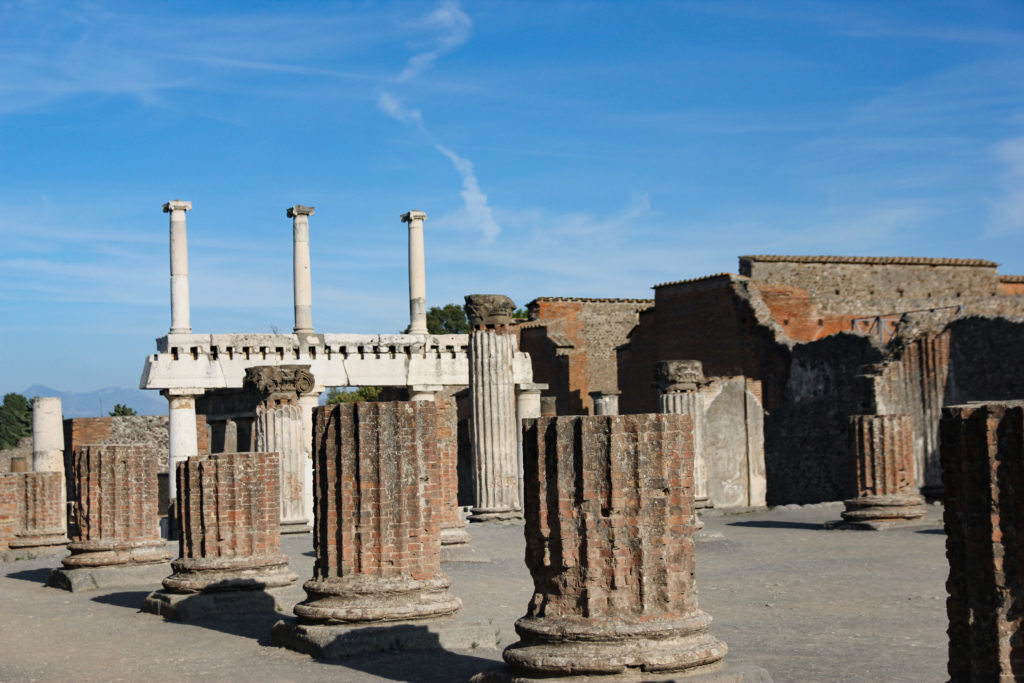

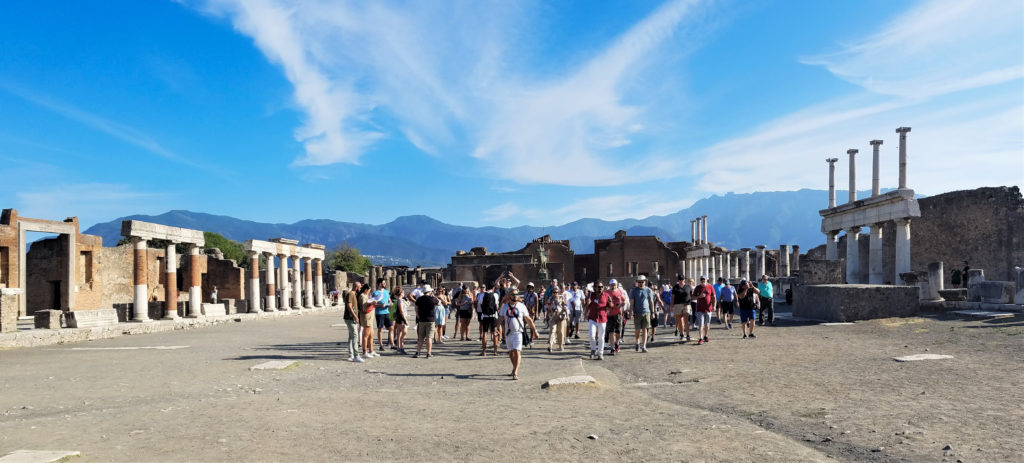
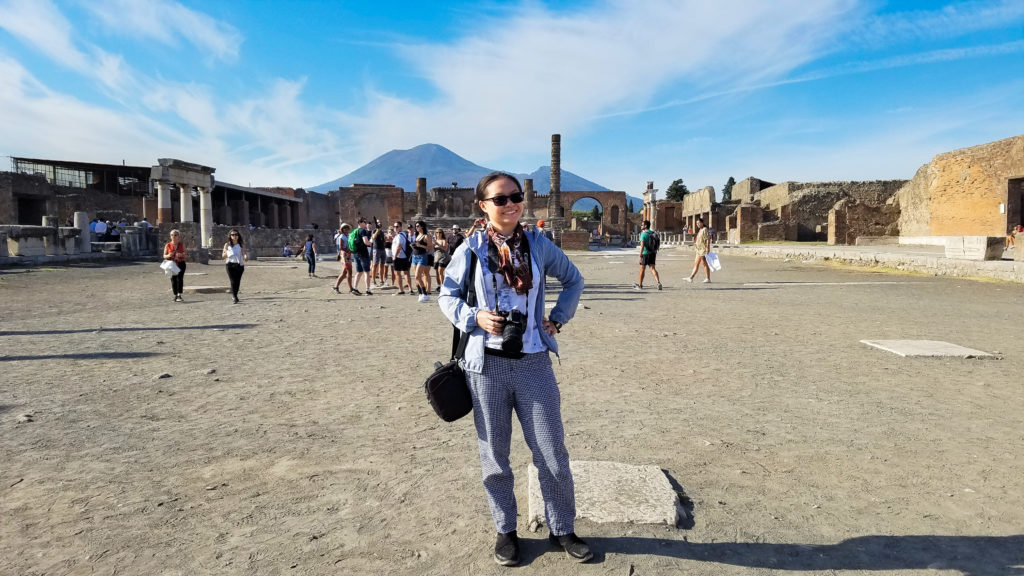
On my walk around the Forum, I found a fence that separated the site from a storage area where I saw a lot of artifacts organized into shelves and displayed on ground level. Interesting to catch a glimpse behind the scenes of the archaeologists’ work in Pompeii.
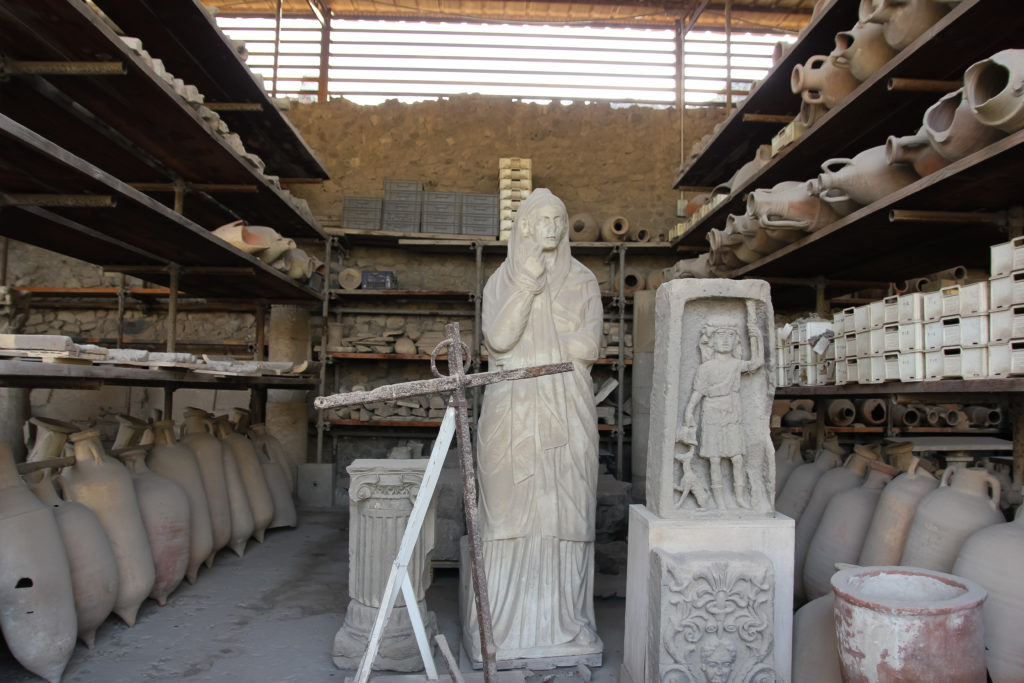
Like I did on my first day in Rome, I walked around the city. There is something about walking on the cobblestone paths that makes it feel like I’ve gone back in time. Pompeii is a city frozen in time, after all!
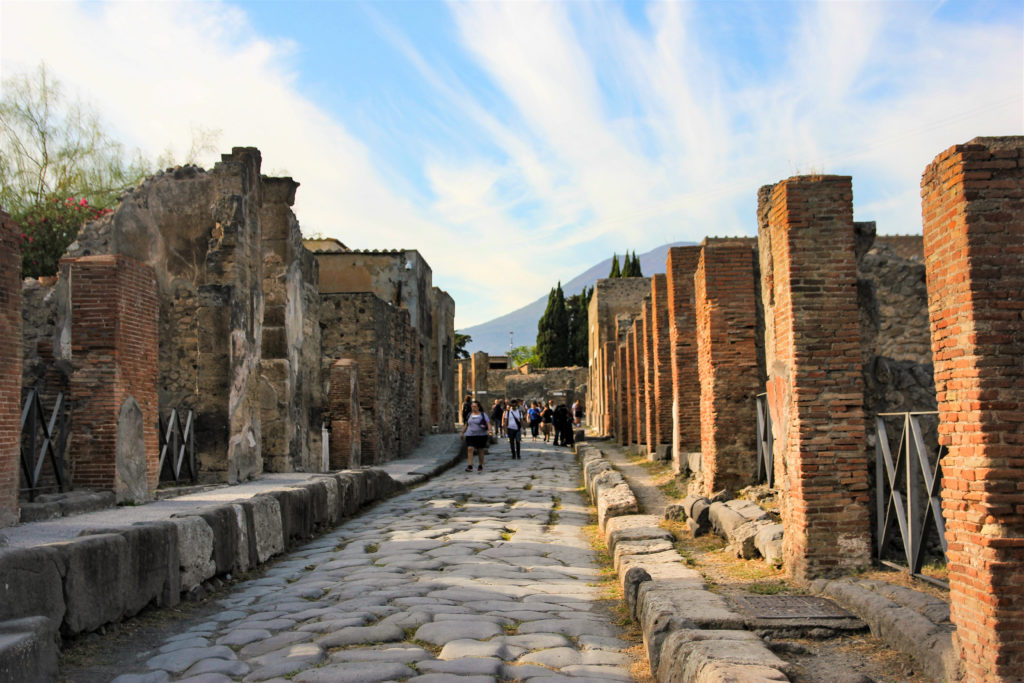

I headed toward the enigmatic-sounding Villa of Mysteries after exploring the streets. I walked past some tombs and grave monuments once I exited the central part of the ruins. I had learned to read some grave inscriptions in Latin when I was at Nobles and knew what some of the abbreviations stood for.
A tomb with bright flowers stood out to me. I couldn’t read all of the text because of the lighting, but once I returned to my apartment and enhanced the photo, I recognized enough of the words to read the inscription. I did some more research online for the pieces I was having trouble with and found out that this was the tomb of a man who was a major leader in Pompeii. He had an expensive funeral and a monument dedicated to him in the Forum.
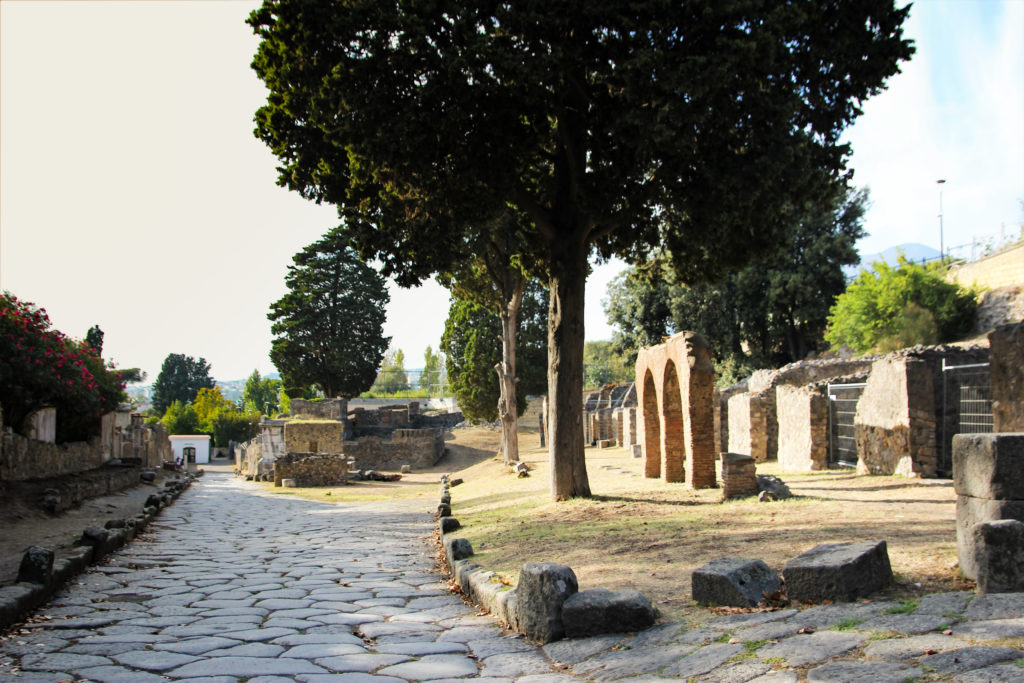

The Villa of Mysteries was farther along the path. It is a large building separate from the rest of the houses in Pompeii. The “mysteries” in its name do not come from the literal sense of the word. The ancient Romans had many gods, but some deities has more of a cult following than others. The rituals of these worshippers are more obscure than the more common religious practices. I have seen the activities of certain cults referred to as “mysteries” in my studies.
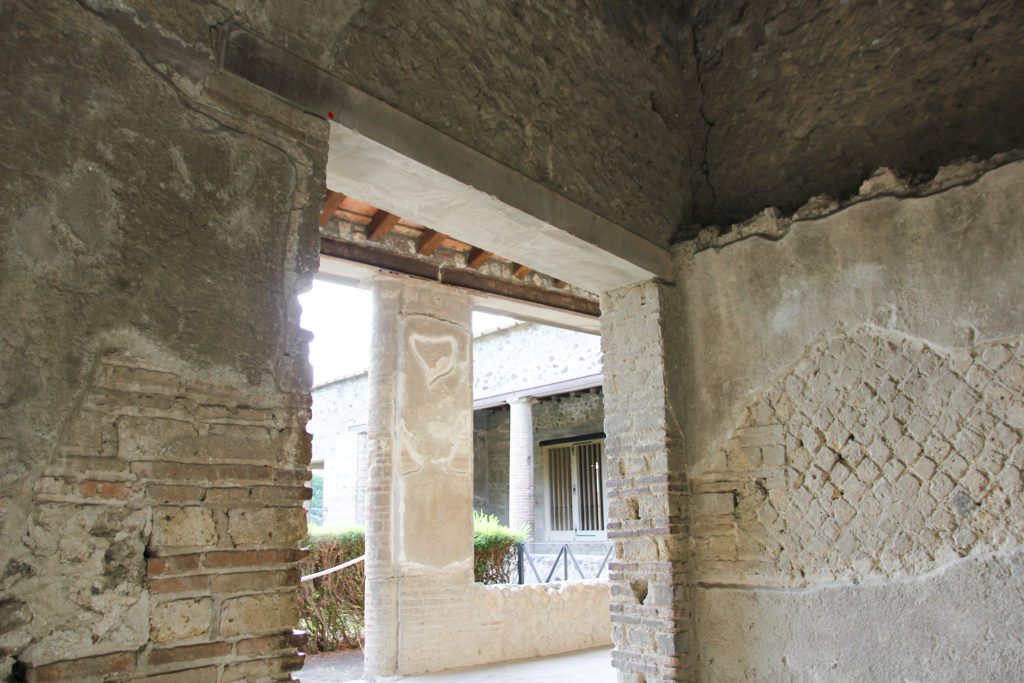
The eruption of Mt. Vesuvius claimed the lives of many Pompeiians, and several of the bodies were buried in volcanic ash. As time passed, the ash hardened and preserved the spaces the people once filled. Archeologists have been able to create plaster casts from these voids and gain insight on the final resting positions of the victims.
The villa also houses colorful paintings on the walls. I learned about the four styles of Pompeiian wall paintings in Mr. Blake’s class, and I recognized some of the paintings as art in the Second Style, which features realistically-proportioned architecture similar to those in the backdrops of theatres. The Second Style is an older style that was in fashion a century before the eruption. This is a good indicator that the Villa of Mysteries is an older building in Pompeii.
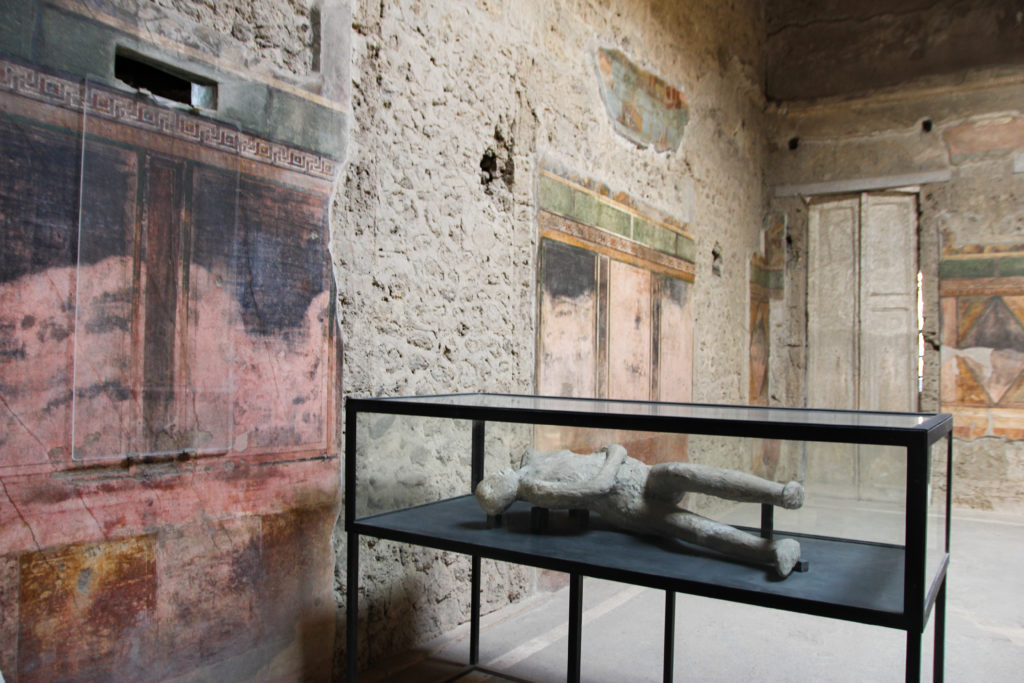
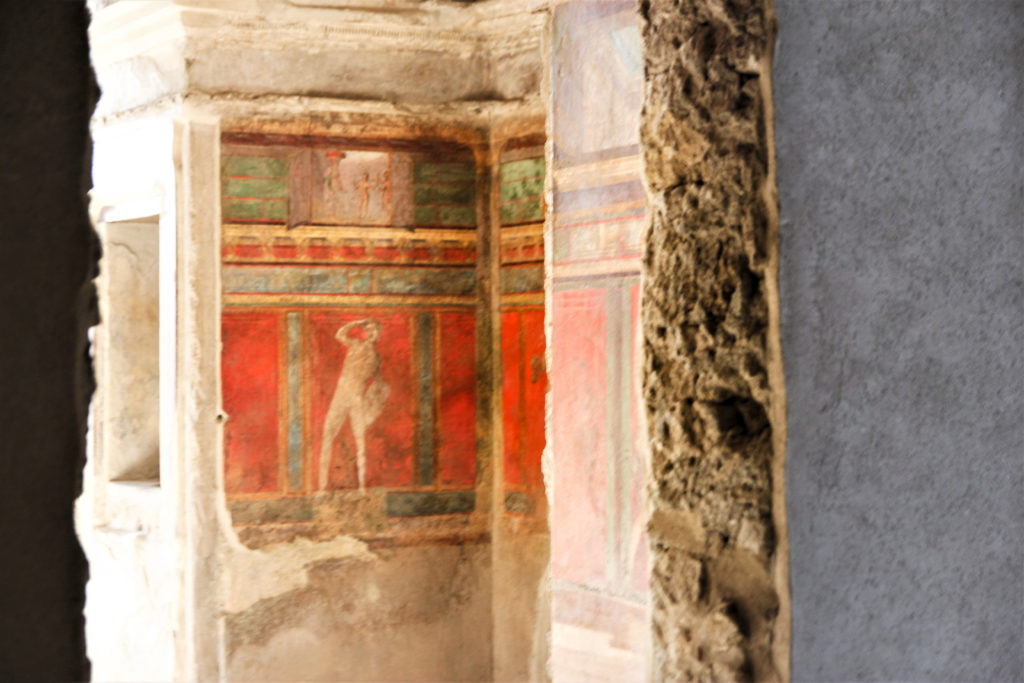

The park was about to close by the time I stepped out of the Villa of Mysteries. I also had to catch my ride back to Rome: couldn’t stay out too late because it would already take more than three hours to get to Roma Tiburtina. I bought some souvenirs. I’m particularly excited to read an interactive book about Pompeii in the past and present! I bought a copy in English and another in Chinese (so I can learn to describe Pompeii in my other language).
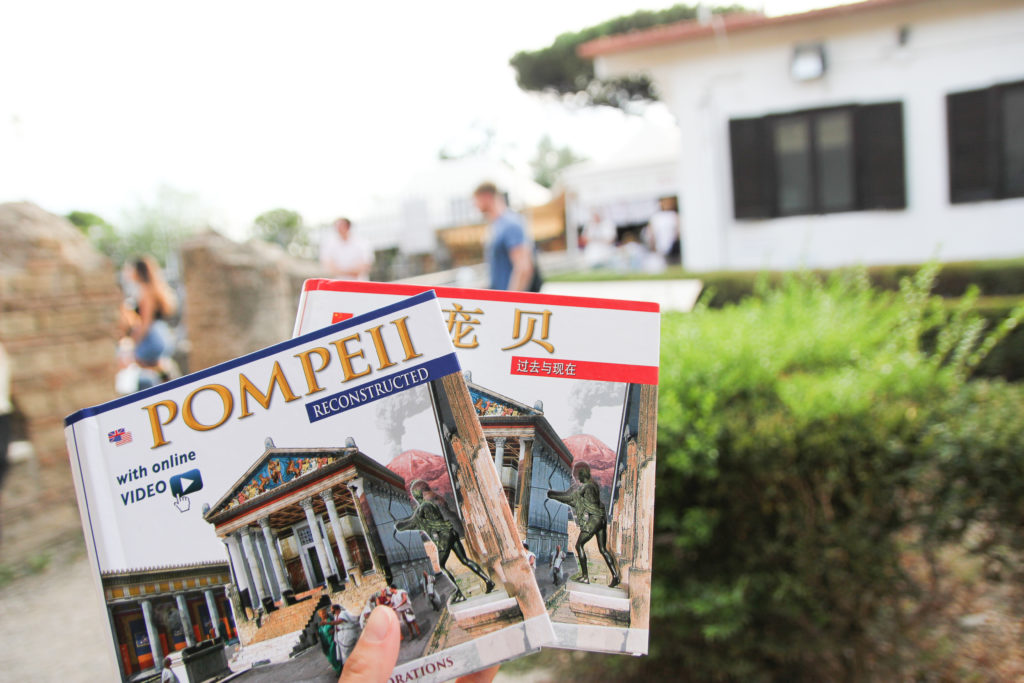
I wish I could have spent more time at Pompeii. There was so much more I would have liked to see, but I was happy that I finally saw the ancient city I had learned so much about since I was younger. I got to see Pompeii come to life in three dimensions.
I emailed Mr. Blake and told him about how, years after I was vigorously reading about Pompeii for my Roman history project, I got to live my dream of studying abroad in Rome and seeing Pompeii with my own eyes. I thanked him for teaching so much about the ancient world and asked if I could mention him in an anecdote in my blog. He was pleased to hear from me and to follow my adventures online. He said that I could mention him and his history class.
On my way back to Rome, I watched the sun set over Pompeii. The colors of the sky over the deep blue of the sea and the black silhouette of the coast were beautiful. Like Pompeii, it is a sight I want to see again. I think I might revisit Pompeii sometime and see more of the place.
Until then, dear Pompeii! May we meet again. As Mr. Blake would sign his emails to me in Latin: cura ut valeas! Take care, so that you are well!
